Highlights
Highlights of IRG research are reported on an ongoing basis to the NSF MRSEC program.
2022
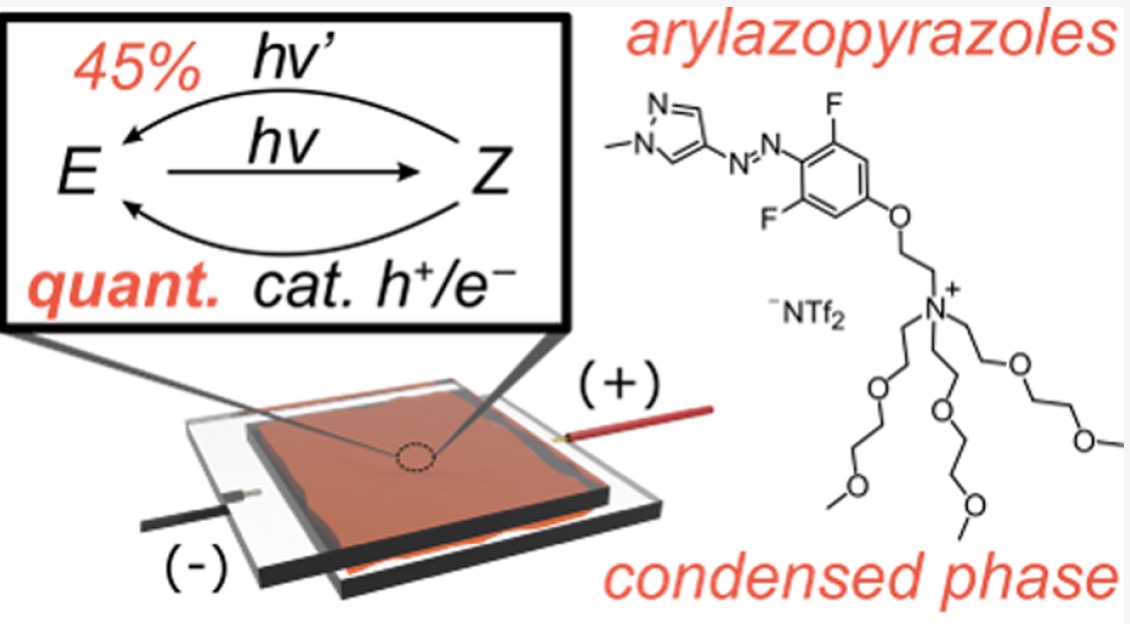
Arylazopyrazole motifs undergo efficient redox-induced Z to E switching in both the solution and the condensed phase to a higher completeness of switching than achieved photochemically.
Here, it is shown that arylazo-pyrazole motifs undergo efficient redox-induced Z to E switching in both the solution and the condensed phase to a higher completeness of switching than achieved photochemically.
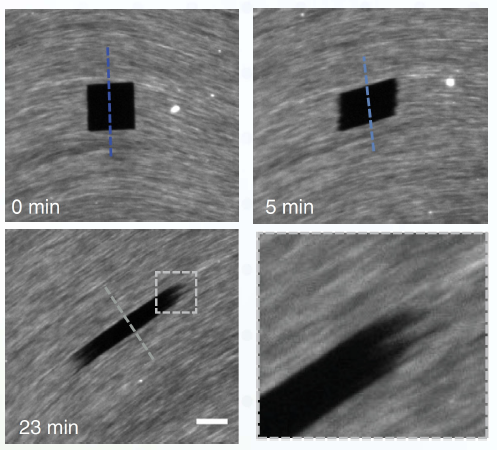
Photographs of fluorescently labeled microtubules forming an active nematic. A square area is bleached. Initially the boundaries are sharp. The zone extends along the nematic direction and roughens.
In microtubule-based active nematics, motor-driven extensile motion of microtubule bundles powers chaotic large-scale dynamics. Here, the interfilament sliding motion is quantified both in isolated bundles and in a dense active nematic. These measurements highlight the challenge of connecting the extension rate of isolated bundles to the multimotor and multifilament interactions present in a dense 2D active nematic.
DOWNLOAD RESEARCH FLYER (PDF)
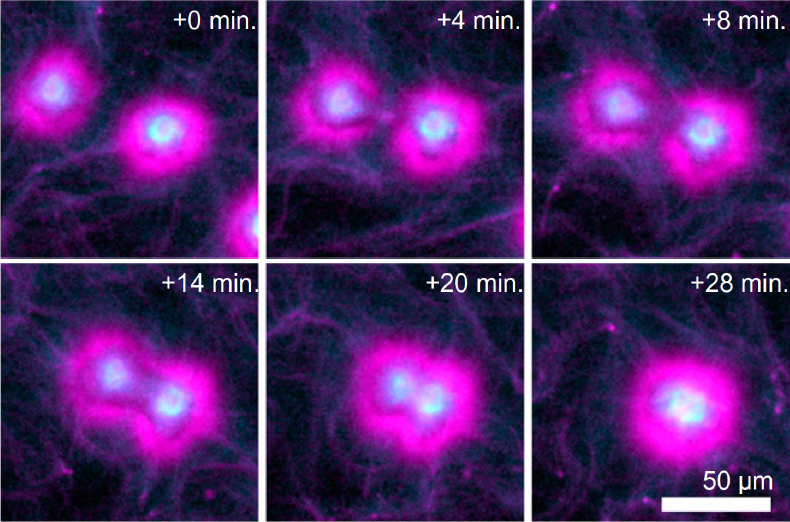
Self-assembly of onion-like layered asters. A self-regulating mechanism ensures the asters’ layered structure survives coalescence-like events, while their temporal stability is encoded in the mechanical properties of the network.
Here, active composite networks, collectively driven by the forcegenerating molecular motors, exhibit complex spatiotemporal patterns similar to those observed in cell biology. This model system elucidates the essential role of passive elasticity in controlling the emergent nonequilibrium dynamics while also establishing a robust experimental platform for engineering lifelike materials.
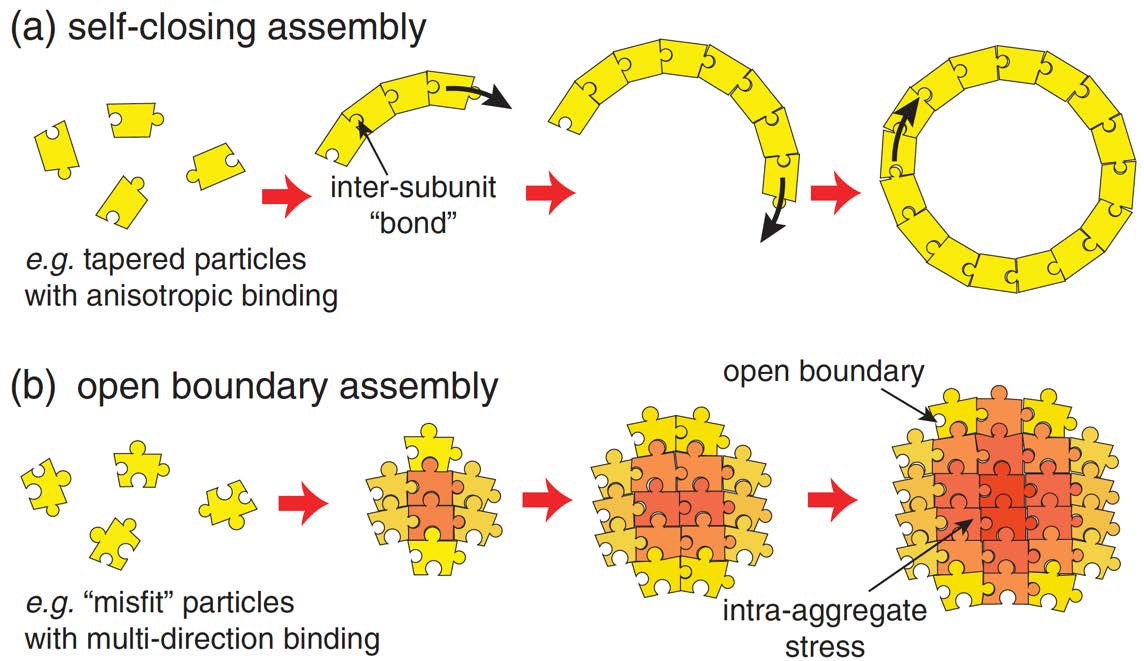
Schematic illustrations of two classes of self-limiting assembly. (a) Self-closing assembly, in which inter subunit rotations lead to cohesive assembly into closed, boundary-free aggregations. (b) Open-boundary (self-limiting) assembly, in which intra-aggregate stress accumulates with assembly and restrains the cohesive drive toward unlimited size.
The Brandeis MRSEC focuses on the more specialized class of self-limiting assembly, which describes equilibrium assembly processes resulting in finite-size structures. These systems pose a generic and basic question, how do thermo-dynamic processes involving non-covalent interactions between identical sub-units “measure” and select the size of assembled structures?
DOWNLOAD RESEARCH FLYER (PDF)
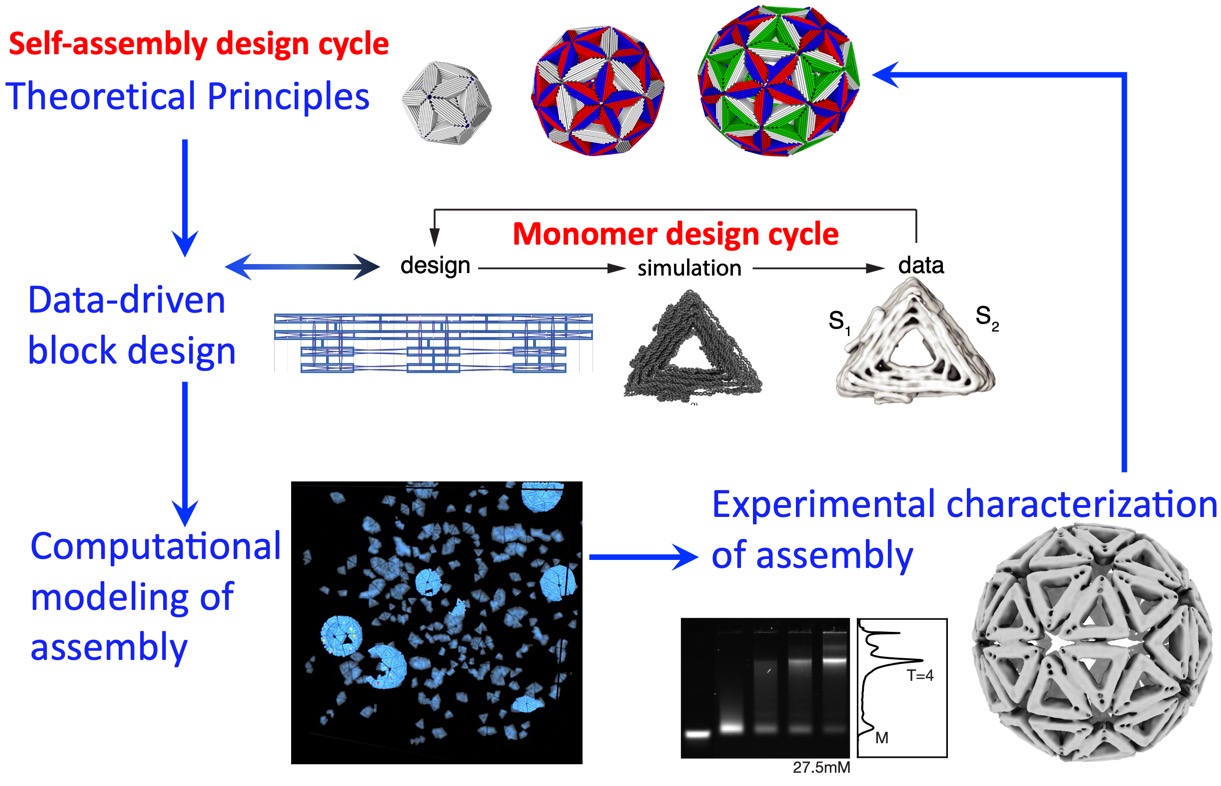
The design process consists of two nested loops of data-driven design cycles. In the monomer design cycle, colloidal monomers are built from DNA origami with sub-nm precision. In the self-assembly design cycle, the monomers join into a hierarchy of shapes.
The self-assembly of biological molecules into large, but finite-size, super-structures is fundamental to life. A grand challenge for colloidal self-assembly is to produce colloidal monomers with valence-limited interactions, that have arbitrary angles and strengths, to produce structures with the precision, complexity and functionality of biological assemblies.
The Brandeis MRSEC solved this challenge in 2021. The process they developed is general and uniquely adaptable to a wide range of problems in colloidal self-assembly.
DOWNLOAD RESEARCH FLYER (PDF)
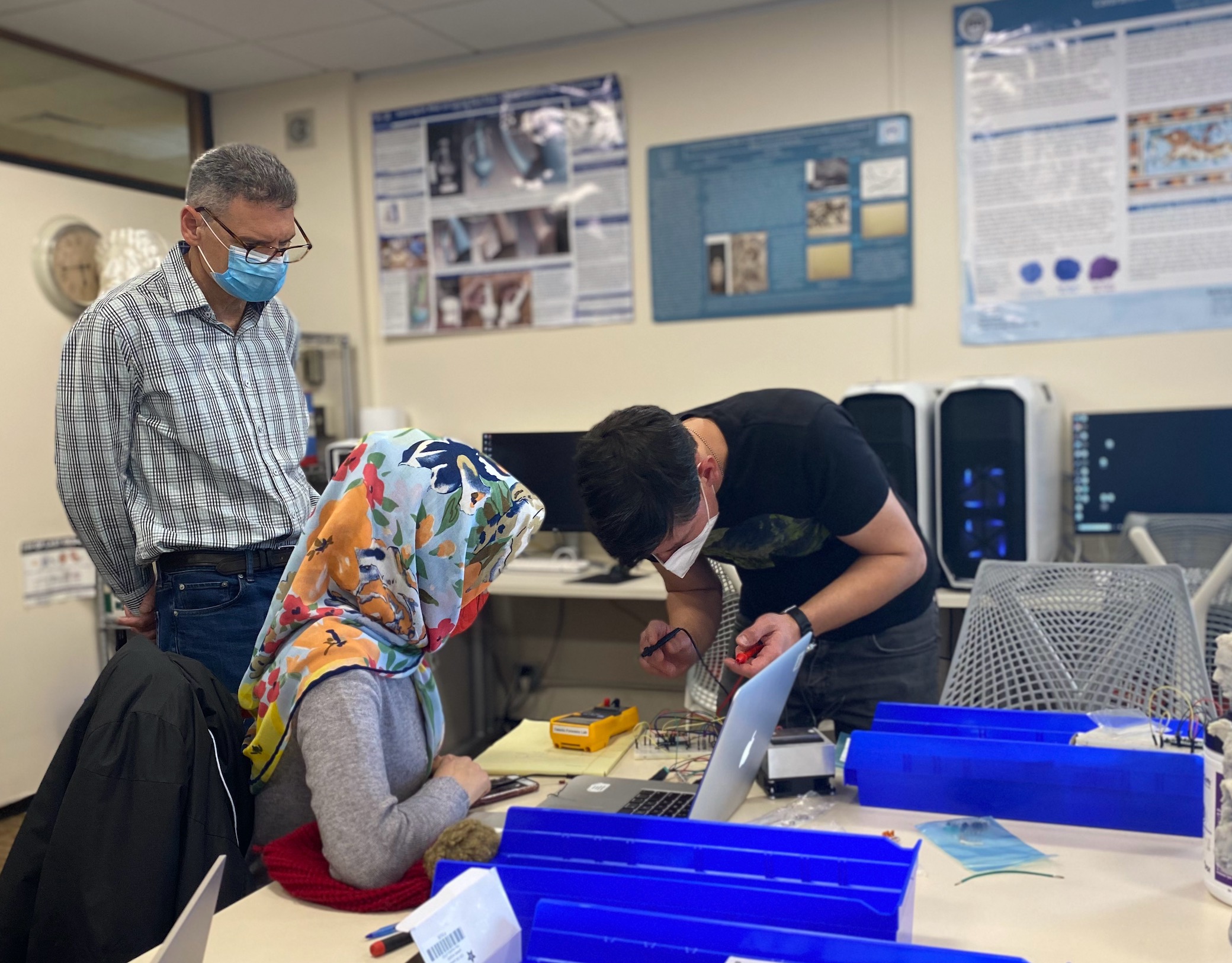
Brandeis MRSEC trainees participated in a smallgroup, hands-on, 15-hour training series to develop their electronic fabrication skills.
Over the course of 5 weeks, this 15-hour workshop tasked participants with developing a temperature regulation system that could cool a sample to a pre-set temperature. By utilizing low-cost, fully customizable materials commonly found in the DIY community, such as Arduinos and 3D printers, workshop participants developed fabrication skills.
The small-group nature of this workshop allowed participants to work together to develop their projects outside of workshop hours. Furthermore, since each workshop meeting was designed to be “bite-sized” with time between sessions to digest material, trainees were able to independently investigate how to further customize their projects to support their individual MRSEC research goals.
DOWNLOAD RESEARCH FLYER (PDF)

Brandeis MRSEC trainees participated in a small group, hands-on, 15-hour training series to develop their electronic fabrication skills.
To support 3MT participants, the MRSEC science communication resource, the SciComm Lab, hosted a workshop series on distilling a thesis project into three minutes and crafting the required single static slide as well as offering one-on-one coaching for 3MT competitors. Competitors are judged on their ability to be describe their research’s significance and impact meaning that MRSEC research was being spread in an accessible manner to the broad Brandeis community. Furthermore, the winning 3MT presentations goes on to represent Brandeis University at regional competitions, further expanding awareness and understanding of materials science research.
DOWNLOAD RESEARCH FLYER (PDF)


